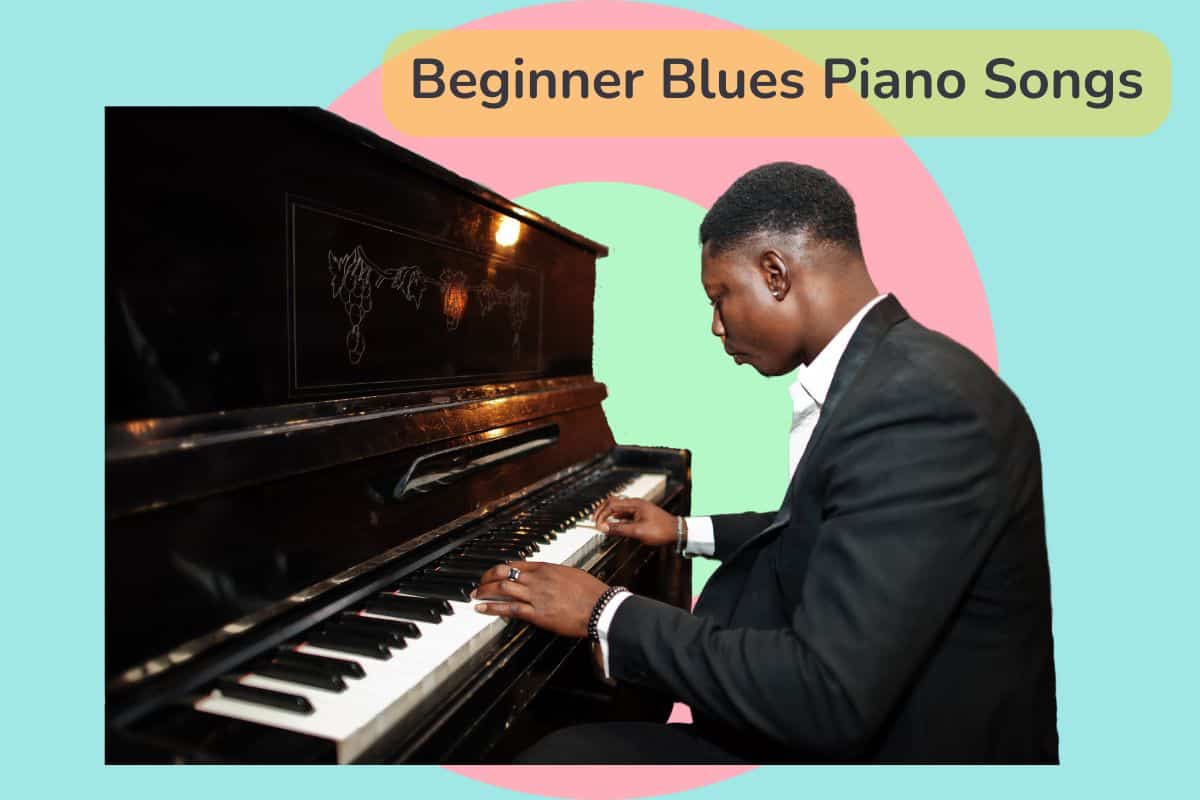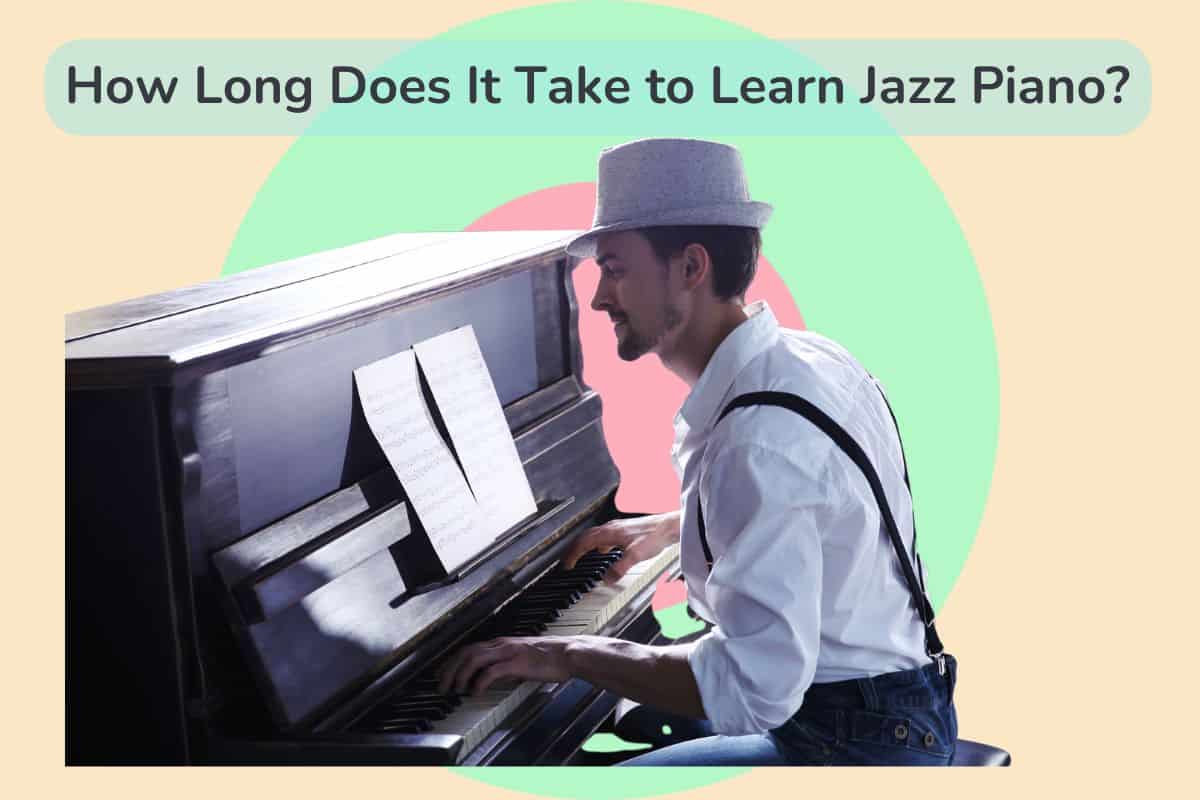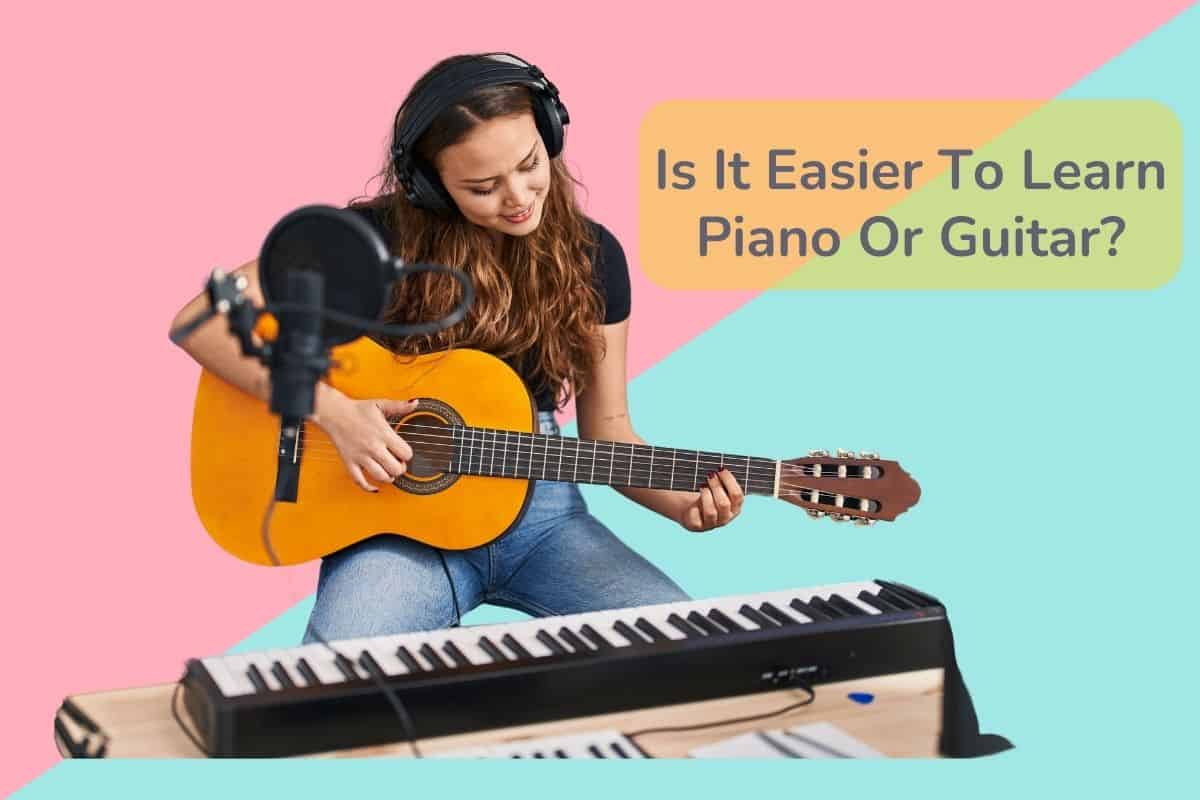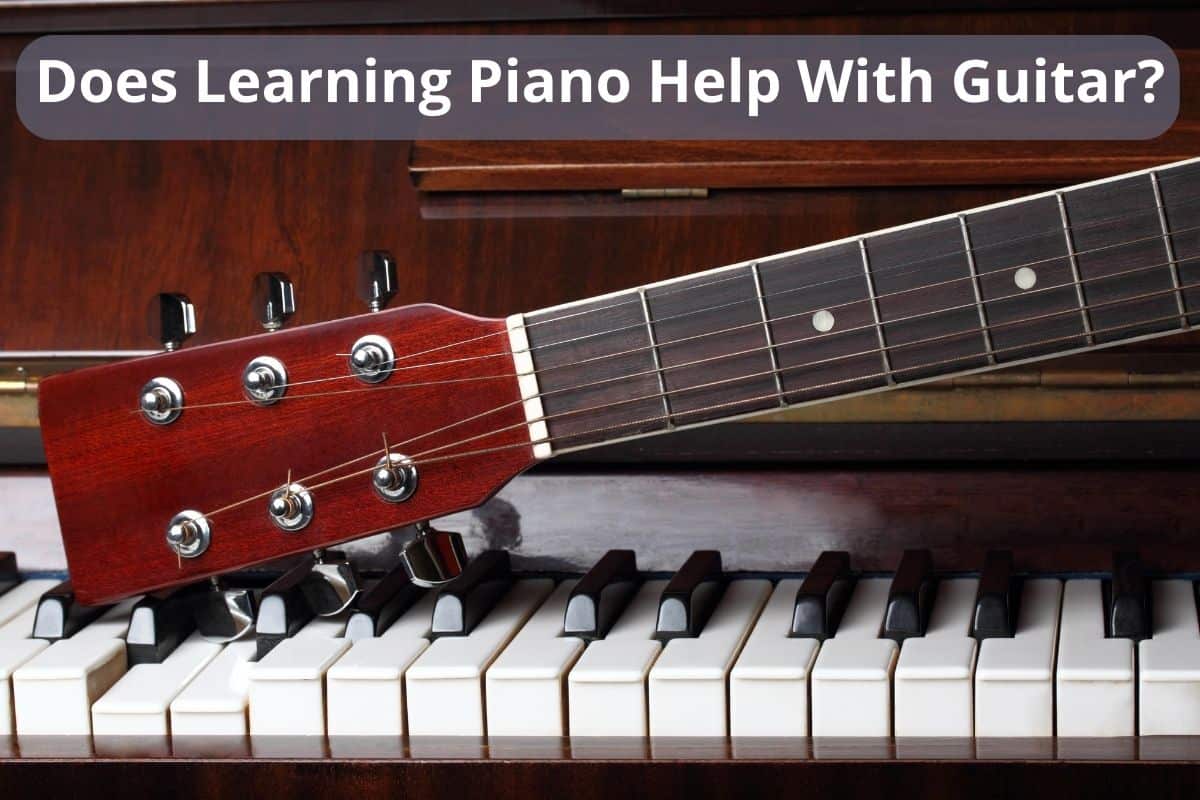For many beginner musicians, it’s hard to decide which instrument you want to start learning. The violin and piano are two popular choices but have radically different playing techniques. They both require skill that comes from focused practice, but which one is easier to learn and which one would suit you?
A piano is easier to learn in the early stages but can take years to master. There are more resources for it, and the maintenance is minimal. With the violin, the initial learning process is more challenging but becomes less complicated. However, it does need more upkeep to keep in prime condition.

To learn more about the pros and cons of learning a violin versus the piano, keep reading!
Piano vs. Violin
Both the piano and violin play in concert pitch, so a beginner can be relieved of the added burden of transposition. However, they’re played differently and produce unique sounds.
For those wondering which instrument would suit their interests and personality better, here’s a comparison of various factors that a beginner would look at when trying out a new interest.
Timbre
It’s easy to get a satisfying sound out of a piano. All you have to do is press a key of any pitch, at any intensity that you want, and you’ll get a note with a pleasant tone that rings throughout. This is possible because whenever you press a key, a hammer inside the piano strikes the strings consistently at different intensities, depending on the amount of force you use.
On the other hand, a violin has several components that go into creating that perfect tone, all of which you have to regulate yourself.
Here’s a short list:
- Tune your violin before playing.
- Memorize the exact position of a pitch on a string.
- Press down on that position with the correct intensity. Be prepared for some finger pain as you press on the string until the pads on the tips grow thick enough.
- Draw your bow across the string precisely to make the right sound. (learning to hold the bow is a challenge in itself in the early days!)
Obviously, that’s a lot more steps than simply pressing a key. You need to be able to get all of these steps in good order, or your violin will sound like a screeching cat.
Another thing about the violin is that you will need to use both hands when you begin – one for holding a string in place and one for drawing the bow across. Although the piano also uses two hands simultaneously to play a piece across the keys, you can still get sound from using one hand. Piano teachers will start you off with one-handed exercises and gradually introduce the other once you have grasped how to use each hand individually to play easy melodies.
Position & Posture
Hand position for the piano is relatively intuitive. Pretend you’re grasping a coffee cup. Then, put the pads of your fingers on a table while maintaining that position. Pretty simple, right? All you have to do in addition to this is sit up straight on a piano bench, and you’re pretty much there for proper posture.
Alternatively, learning the violin requires you to get used to many unnatural and awkward positions. You have to get used to holding an instrument with your head and shoulder, using your chin and cheek for a basic violin hold. Once you’ve mastered that, you need to grasp your bow correctly for maximum range of motion to try different bowing techniques.
After that’s done, you need to figure out where the correct notes are on the strings and memorize them because the fingerboard is fretless, unlike a guitar or a ukulele. All of this requires a lot of focus and can take a good while to learn. In comparison, you can play recognizable melodies on the piano in a much quicker time.
Resources
If you want to learn piano without the aid of a piano teacher, or you’re seeking additional practice, there are a lot of great applications and online resources that you can use to further your skills.
Apps like FlowKey and Skoove allow you to play along to a variety of tunes with a teacher. You can either connect via MIDI if you have a digital piano; otherwise, you can use your device’s microphone if you’re using an acoustic one. It can follow the notes and rhythm you’re playing and correct you as needed.
In addition to this, there is a ton of piano sheet music available on the internet, and sometimes it’s free. However, if you want modern copyrighted tunes, you will usually have to pay a small amount.
Of course, you can also buy many songbooks from places like Amazon, where you’ll find a whole stack of music in one book that could be more cost-effective.
There are also many YouTube channels and online websites dedicated to teaching beginners how to play the piano.
If you want to, these will allow you to get started learning the piano. It might take longer to learn the basics than someone who has a teacher, even if it is an online teacher, but with enough motivation, you will be able to play some primary songs.
However, if you’re a beginner and serious about playing the piano, I strongly suggest you get some structured piano lessons from a real teacher to learn the basics. With the internet, you can have private lessons via SKYPE/Zoom that fit your budget and schedule.
The violin does have similar applications for learning basic pieces like Trala or Jameasy, but you cannot find a wide range of applications as there are for piano. It is also challenging to find sheet music for solo violin pop songs and other genres that aren’t classical music! which is in stark contrast to the piano.
You can also forget the idea of learning the violin on your own. Unlike some other string instruments which have frets, the neck of the violin is fretless. Therefore, if you are a complete beginner at playing any stringed instrument, you will be very lost.
Like learning the cello, it is imperative to have a violin teacher from who you can question and get advice if you are a beginner. They can show you the correct finger placement, correct your mistakes and give you a positive learning experience, amongst many other things.
Learning The Violin: Pros & Cons
If you have already decided that you’re going to be learning the violin after taking the factors above into consideration, here are a few things that you need to know before you dive in:
Ear Training
Unlike a piano, which only needs to be tuned once a year or so, a violin needs to be tuned every time before you play it. This will train your ear to be more sensitive to different types of pitch and various micro-tonalities.
Although you will need a digital tuner’s aid at the start, as time progresses, you will be able to automatically hear the differences between different pitches and tune your violin automatically. This is an excellent skill to have as it can lead you to develop relative pitch, which is essential to many branches of music theory.
You’ll be able to pass any aural exams that you take with flying colors because you’ll be able to hear if the examiner is playing a sixth or a fourth that much easier. It will also help you with music composition, particularly improvisation, as you’ll be able to determine what to play and what not to play naturally.
Group Playing
As a violin is primarily a melodic instrument, it is often used in a group setting. This group setting can either be a string ensemble, folk band, or as part of the orchestra.
A group setting provides enormous benefits from a social perspective. Unlike pianists, who are primarily soloists, playing the violin will take the spotlight away from you and place it on the group as a collective.
This lets you enjoy performing on stage without stage fright. As you grow more confident in your skills, you can participate in violin solos and display your talents!
A group setting also teaches you how to coordinate well with other people. In the orchestra, violinists usually play the same notes in a piece, so you need to coordinate with others to form a harmonized sound.
This is especially great for young children, or introverts, as they get to socialize with others in a controlled and pressure-free setting.
Makes It Easier To Learn Other String Instruments
If you learn a violin, it means that you’ll have an easier time learning to play other string instruments like the cello or viola. Most string instruments are non-fretted and require a bowing and plucking motion, which you’ll already have perfected.
The only thing that could be different is the position in which you play the instrument. For example, double bassists play their instrument sitting on bar stool-type seats, as it is so large.
Maintenance
Although buying a standard beginner-level violin is much cheaper than buying a real piano, and even beginner digital ones, you will be spending more money over the next few years maintaining it.
A violin is traditionally made from wood and is comparatively more fragile than a piano. Broken strings are common; there will be bridge adjustments and replacement, and rehairing your bow will set you back $50 or so.
Fortunately, they come with a sturdy carry case that will keep it safe during travel. However, you will still need to be careful with this highly portable instrument.
Can I Learn Piano And Violin At The Same Time?
It’s always a challenge learning two things successfully, especially if you’re brand new to both. When you’re a child, it can be easier as you’re like a sponge taking in many new things. But when you’re older and have more responsibilities and time pressures, it can be more challenging.
However, the piano and violin are both ‘C’ instruments, so they share the same sheet music. The components of music theory relate to both, which makes it easy to transition between the two. With the right teachers and dedication, you will be able to learn both and make good progress.
Both of these instruments require a radically different technique, which can be testing. Playing with two hands on the piano in contrary motion is very different from the bowing and pressing of the strings that are needed for the violin. However, both instruments require similar finger strength, so there is a good crossover there.
You will likely progress faster on the piano than the violin. This will lessen the violin’s learning curve, making it easier to hear intonation differences and play the correct pitch.
Also, you might become frustrated with the big difference in progress between the two instruments. Even though these two are very different instruments, ultimately, learning the two together can be very rewarding because it gives you another angle to explore all the music theory facets.
Piano And Violin, Which Is Harder To Learn For Late Beginners?
Although the piano is easier to learn for late beginners, learning the violin is not as difficult as everyone makes it out to be. As an adult, you will be more conscious of your posture, hand positions, and other techniques and constantly try to correct them, speeding up your learning progress.
In terms of proficiency or being able to play like an amateur professional, the violin is easier than the piano. While you might struggle with the steep learning curve at the start, it is possible to get a beautiful pitch and tone and play most orchestra pieces for violin after only three or four years.
On the other hand, as the piano has a comparatively more ‘monotone’ sound, you will need to bring this sound alive by using advanced techniques and many hours of practice to create texture and depth that can take years to master.
Final Thoughts
The piano and violin are two musical instruments that create a very different sound and require vastly different learning techniques. You’re more likely to get a quicker melodic result from learning the piano, but once you’ve mastered the violin’s intricacies, it is easy to shine with that instrument.
It all comes down to what you want from them and what kind of musician you want to be. You will usually find the violin as part of a group, whereas the piano can stand alone independently. The types of music freely available to the violin tend to be more traditional from classical, folk & fiddle, while the piano songs cover the whole spectrum.
Whichever one you choose, make sure you understand that it won’t happen overnight, especially with the violin. To become a professional pianist takes years of dedication. However, you can get to a good standard within a relatively short period of time. But you will need to put in the time and effort.



